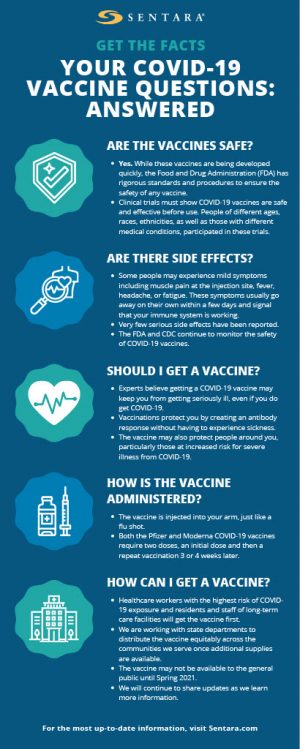NORFOLK, Va. (WAVY) — As of Monday, more than 843,000 coronavirus vaccines have been given out in Virginia. Experts say it is a crucial tool in fighting the virus, however, some people are hesitant to get it and there is a lot of confusing information out there.
Dec. 11, 2020 was the day the Food and Drug Administration issued the first emergency use authorization for a COVID-19 vaccine. Another vaccine was approved one week later.
Since then, millions of the Pfizer and Moderna vaccines have been put into the arms of people around the world.
While the speed was encouraging, it left a lot of people wondering: How did this happen so quickly?
“What we saw was 30 years of research that finally came to fruition with these two vaccines,” said Dr. Edward Oldfield, professor of medicine at Eastern Virginia Medical School in Norfolk.
Health experts say the Pfizer and Moderna vaccines use messenger RNA (mRNA) technology, which the scientific community has been working on for decades.
In 2020, those decades of research and technology paid off, at a time when the world desperately needed hope.
“When COVID-19 arrived in 2019, we already had a lot of information,” said Emilia Oleszak, Old Dominion University Department of Biological Sciences assistant professor.
How exactly do the Pfizer and Moderna vaccines work? Here’s what the experts told 10 on Your Side:
When you look at an image of COVID-19, you see the spikes which form a crown around the virus. That’s how the virus got its name and how it attaches to your cells and makes you sick. When the mRNA in the vaccine is injected into the body, it tells your cells how to make the spike of the virus. However, your body doesn’t like that spike because it’s not supposed to be there. So your body makes a protective response that binds to the spikes and inactivates them. That way, if COVID-19 does ever enter your body, your body will already know how to fight it off.
Oldfield says there is no living or dead virus being injected into your body.
“The messenger RNA tells your cell how to make just the spike. That’s all it does. It’s just the spike,” said Oldfield. “No whole virus. It cannot enter the nucleus where your genes are.”
Your body takes it from there.
Dr. Michael Charles, a family medicine physician with Sentara Healthcare, said, “When these little spike protein pieces come out, your body knows that it’s not natural, and that’s why it says ‘OK, well we’re going to generate an immune response to it.'”
Charles says a team from the hospital group met with a clinical pharmacist from Pfizer before the vaccine was rolled out.
“Were any steps skipped with this? Why was this able to be developed so quickly? And the answer was a definite, no steps were skipped, but everything was basically accelerated,” said Charles.
Some of the red tape was eliminated, but tens of thousands of people still participated in the clinical trials.
“Instead of waiting until one was completed to start the next, they might run a parallel pathway,” said Oldfield.
What about those side effects people are reporting after getting their vaccines? People have reported having sore arms, perhaps some fever and chills.
The experts say those are all good things.
“That’s your body’s immune system ramping up,” said Charles. “So that’s a good thing. That means that your body is actually creating antibodies to this disease.”
The other good thing? The light at the end of the tunnel is finally there.
“The vaccine has the potential of ending the pandemic,” Charles said. “It has the potential of saving millions of lives, there’s no doubt about that. It has the potential of stopping us from living in fear.”
What about rumors that this vaccine can affect fertility? 10 On Your Side’s Marielena Balouris will have more on that on WAVY News 10 at 6 p.m. on Tuesday, Feb. 2.
Download the WAVY News App to keep up with the latest news, weather and sports from WAVY-TV 10. Available in both the Apple and Google Play stores.











































































































